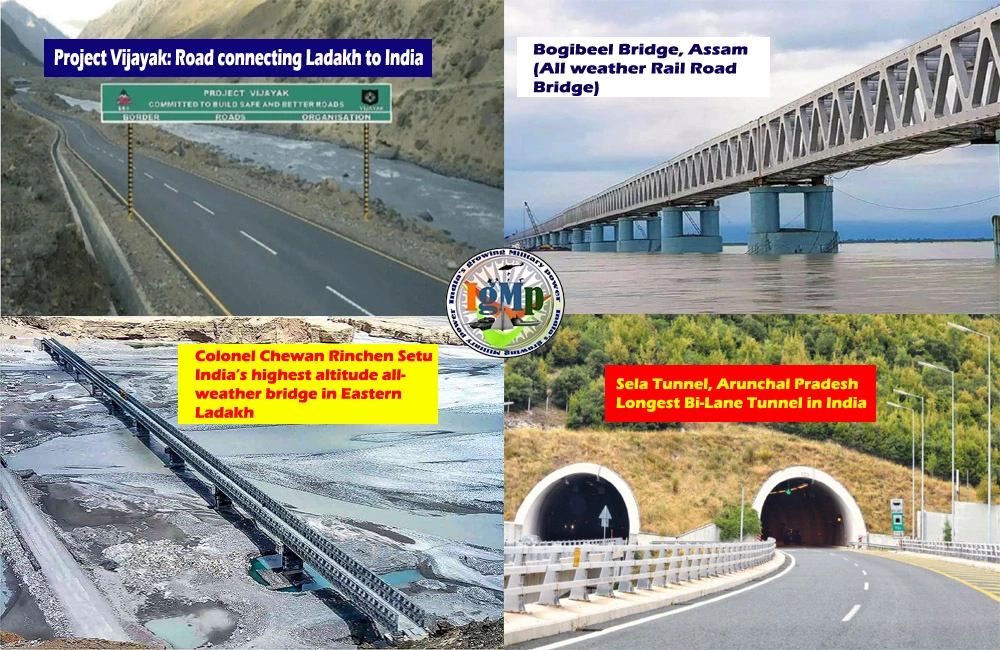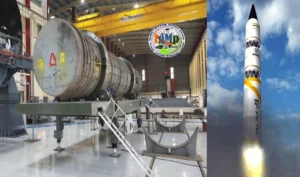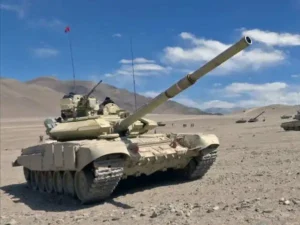Source : Indian Defense News

How India Dispels The Myth of Inaccessibility of The Himalayas With Construction of Solid Infra near China border
From building the longest tunnel in Asia and the highest railway bridge in the world to having the planet’s longest single-tube highway above 10,000 feet, India is sending a clear message: the mountainous landscape of Himalayas is not that hard to conquer.
According to India’s junior Defence Minister, seven tunnels are being built along India’s border with China, in addition to the five tunnels that are already operational and those ten which are under construction at the moment.
This engineering boom highlights India’s growing focus on enhancing frontier infrastructure close to the 3,488-kilometer-long Line of Actual Control (LAC), the de-facto border between India and China.
India-China Contest For Himalayas
This comes in the backdrop of India’s ongoing military stand-off with the Dragon country, which has now extended into a fourth year.
New Delhi’s military dispute with Beijing began in May 2020 before turning murkier the following month after troops engaged in fist combat in the Galwan Valley, resulting in the deaths of soldiers on both sides.
Though armies of the two Asian giants have deescalated and disengaged from certain friction points in Eastern Ladakh, New Delhi, and Beijing have failed to resolve their dispute regarding Demchok, Depsang, and Daulet Beg Oldi despite several rounds of diplomatic and military talks.
What’s more, India has repeatedly stated that the alleged Chinese actions (read: incursions) have eroded the trust between the two neighbours and they cannot share warm relations until peace and tranquillity return at the border.
But Beijing seems to have a different perspective on the issue, with Chinese Foreign Minister Wang Yi urging the Indian side to stabilize bilateral ties at a recent BRICS meeting last month.
In this light, the speed of India’s border development program appears to have escalated manifold with military watchers in New Delhi not willing to leave any stone unturned in their efforts to safeguard their territory, especially when the world’s largest democratic nation has got two bitter rivals in the form of Pakistan on one side and China on the other.
Is China’s Belligerence Behind India’s Infrastructure Push?
As per Colonel Jaibans Singh (Retd), who spent considerable time at India’s northern borders, Ladakh is India’s frontier base with China, and it is a state which is “belligerent towards India on multiple counts which are increasing by the day because of certain economic, political and military reasons”.
Therefore, he added, that there is no option for New Delhi except to be very vigilant about Chinese activities not only in Ladakh but also in the context of Pakistan because Beijing is giving covert and overt support to Islamabad to stand up against India, especially in the Kashmiri region of Gilgit-Baltistan due to the China-Pakistan Economic Corridor (CPEC).
“The LAC is a sort of a line which has got different perceptions, in the sense that the LoC (India’s de-facto border with Pakistan) is well-defined but the LAC is not well-defined. Because of these perceptions, at times China says that this part of the LAC is ours while India says that it is ours,” Singh told Sputnik India on Thursday.
He argued that because of these perceptions, there has been a lot of confusion at the border, but over the years, particularly since the 1962 Sino-Indian war, a military escalation between the two nations had not taken place barring an odd flare-up. In 2020, however, things went a little out of control. Though no shots were fired in Galwan, troops of both countries did die in the scuffle.
Under these circumstances, the defence expert underlined that a very concerted impetus to infrastructure development in the Himalayan region has been given by the Narendra Modi government.
Singh pointed out that the system of progressively building border infrastructure due to its military importance has been going on in Ladakh and other Himalayan sectors of the country for years.
Intelligence Failure in Kargil Changed India’s Approach
He claimed that the infrastructure development in Ladakh got prominence for the first time after the terrible intelligence failure in Kargil in 1999. Based on the Kargil Review Committee, the command, and control of the Ladakh region, was handed over to the XIV Corps of the Indian Army. Besides, the headquarters of the Corps came up in Ladakh.
“Though it is extremely difficult to develop a network of tunnels, roads, railways, etc in the mountainous regions. But under the prevailing circumstances, a concerted effort has been made to build infrastructure in border regions adjoining China,” Singh explained.
With the government of India giving special attention to its Himalayan border region, Sputnik India looks at the major state-of-the-art projects that are not only of strategic importance for New Delhi but are also transforming the lives of the people in the region.
Atal Tunnel
Built at $438 million, the Atal Tunnel is an operational road tunnel constructed under the Rohtang Pass which is located 51 kilometers from the tourist town of Manali in India’s northern hill state of Himachal Pradesh.
The 9.02 km tunnel is the highest single-tube motorable tunnel on Earth, standing 10,000 feet above sea level. Named after BJP stalwart and the former Prime Minister of the country, Atal Bihari Vajpayee, it connects the picturesque Kullu Valley of the state with the arid Lahaul and Spiti region of Himachal Pradesh.

Since being opened in 2020, the tunnel has transcended the lives of the people living in Lahual and Spiti, reducing the time taken to travel to Manali by two hours. This comes as a big relief for commuters, especially in the winters when Lahaul and Spiti become inhabitable for humans.
Meanwhile, the tunnel is of great strategic value for India’s armed forces as it is the only all-weather route available to move troops to Ladakh and Siachen where it shares disputed borders with China and Pakistan respectively.
Zojila Tunnel
Once completed in 2026, the $1.04 billion under-construction Zojila Tunnel will be Asia’s longest tunnel. The horseshoe-shaped single-tube tunnel is being built under the treacherous Zoji La pass at over 11,575 feet above sea level.
The 14.2 km long strategically located tunnel will provide all-weather connectivity from the Ganderbal district of Indian-administered Kashmir to the Kargil district of the Union Territory of Ladakh. This in essence will be the second all-weather link to Ladakh after the Manali-Leh road through the Atal tunnel.
At present, vehicles crossing the Zojila pass have to undergo a risky four-hour journey, which would come down to just 15 minutes after the tunnel’s inauguration.
Plus, the tunnel would provide them with a safe passageway in contrast to the present conditions where commuters have to travel on a narrow strip of land, featuring multiple curves and deep gorges.
Jammu-Srinagar Four-Lane Highway
Being developed for $1.93 billion, the 4-lane highway connecting the summer and winter capitals of the erstwhile Indian state of Jammu and Kashmir, Jammu and Srinagar, is nearing completion, the South Asian nation’s Road Federal Minister of Road Transport and Highways Nitin Gadkari told reporters in April.

Of the 250 kilometers under construction, 210 km has already been laid. The highway features ten tunnels, with an overall length of 21.5 km. The highway is scheduled for completion in 2024. Once opened, it is set to bring down the travel time between Jammu and Srinagar from 9-10 hours to 4-5 hours, as per an official statement.
Moreover, Gadkari stressed that this highway will lead to a four-fold increase in tourism in Kashmir. In addition to that, economic activities will also gather pace with the region tipped to experience a spurt in the construction of hotels, restaurants, and resorts.
Kushok Bakula Rimpochee Airport
Located at 10,682 feet above sea level, Kushok Bakula Rimpochee Airport serving the people of Leh, the capital of Ladakh, is regarded as the airport with one of the most stunning landscapes in the world.

Though known for its scenic beauty, the airstrip at the airport is one of the most difficult in the world to land an aircraft on. Because of the high speed of winds blowing in and around the airport during noon hours, authorities do not permit flights to operate in the afternoon. That’s why, flights are allowed to land and take off only in the morning hours.
To give a modern look to the airport, the Indian government is building a new airport terminal at the site. The overall, cost of the project is $60 million. After its completion, the airport will have an annual capacity of 2 million visitors.
Jammu–Baramulla Railway Line
The $3.5 billion Jammu Baramulla railway line is an under-construction project of the Indian Railways being built to connect the Jammu city of the Union Territory of Jammu and Kashmir with the Baramulla town of the Kashmir valley.
To date, there is no direct railway link between the Indian mainland and the Kashmir valley. But, this 338 km railway project, slated to be completed later this year, is set to resolve the long-pending issue of connectivity in the region.
Originally planned in 1994-95, the rail link has faced many hiccups due to Kashmir’s fragile landscape. In the 2000s, work on the project came to a standstill due to the challenging topography.

The delay in the construction of the line in large part should be attributed to the long wait in constructing a bridge over the Chenab river, without which the railway track could not be laid.
But, Indian engineers somehow managed to find a way and the South Asian nation now holds the record for the tallest railway bridge in the world. At 359 meters, the structure of the Chenab Bridge is taller than the world-famous Eiffel Tower in Paris.
The railway line is said to be a game-changer for India’s security needs, especially for its border areas along the frontier with Pakistan as it will allow New Delhi to move troops to the region at a much faster pace than at present.
India Changing Himalayas’ Landscape
Former Indian Army Colonel Jaibans Singh, whom Sputnik quoted above, reckons that the infrastructure development is not only happening in the higher reaches of the Himalayas, but in the plains as well.
He insisted that the roads leading to Manali from Chandigarh and roads going upwards toward Srinagar from Jammu across the Zojila pass, have all been either four or six-laned or are in the process of being four or six-laned.
“Building a road in the Himalayas is very difficult because the construction agencies only get six months to lay down these thoroughfares as no work is possible during winter. It is not an easy game to play but with perseverance, India has been trying to build road structures that are leading to Ladakh,” he asserted.
Furthermore, what has been remarkable about this road-building exercise in Singh’s assessment is that the roads have become all-weather from the Manali side in Himachal Pradesh, where the Atal tunnel has come up, and soon, the roads will become all-weather from the Zojila side also because the Zojila tunnel is under construction.
Also, the authorities are developing an alternative route which is called the Zanskar valley road to West Ladakh which is going to come up by 2026. This will have a 4.1-kilometer-long twin-tube tunnel called the Shinku La Tunnel to move troops through the Lahaul and Spiti district of Himachal Pradesh.
To stress the importance of this development, Singh quoted an anecdote from his military career, when he was posted in Kashmir.
Winter Stocking to Become A Thing of The Past
“When I was in the Northern Command of the Indian Army, one of the biggest jobs that had to be done was winter stocking as the entire Ladakh region was cut off from the Indian mainland for about six months as it was covered under a thick blanket of snow during its harsh winters.”
Singh implied that in such a scenario, this stocking was mainly done with the help of aircraft, and military convoys with an organized system taking care of this whole exercise every year. But all this has changed due to the all-weather connectivity which India has achieved through the Atal tunnel in the Himalayas which is set to get enhanced with other projects that are slated to be completed in the next few years.
The geopolitical analyst contended that as the infrastructure gets enhanced in the region in both Kashmir and Ladakh, one can examine its impact through the flourishing tourism industry there. As visitors arrive in the region throughout the year locals of the area have started homestays, eateries, etc.
The telecommunications network in the region is also getting a boost with the introduction of fibre optics. Plus, the solar electricity generation sector is witnessing a boom.
“Over and above that, the bridges in the Himalayan region have been transformed into all-weather ones. Earlier, most of the bridges were weak and traffic coming from only one side could ply on them at one point in time. But now the bridges can take the load of tanks, heavy machinery, artillery guns, and so on. This in itself is a big change,” Singh concluded. How India Dispels The Myth of Inaccessibility of The Himalayas With Construction of Solid Infra near China border How India Dispels The Myth of Inaccessibility of The Himalayas With Construction of Solid Infra near China border How India Dispels The Myth of Inaccessibility of The Himalayas With Construction of Solid Infra near China border How India Dispels The Myth of Inaccessibility of The Himalayas With Construction of Solid Infra near China border How India Dispels The Myth of Inaccessibility of The Himalayas With Construction of Solid Infra near China border How India Dispels The Myth of Inaccessibility of The Himalayas With Construction of Solid Infra near China border How India Dispels The Myth of Inaccessibility of The Himalayas With Construction of Solid Infra near China border How India Dispels The Myth of Inaccessibility of The Himalayas With Construction of Solid Infra near China border How India Dispels The Myth of Inaccessibility of The Himalayas With Construction of Solid Infra near China border How India Dispels The Myth of Inaccessibility of The Himalayas With Construction of Solid Infra near China border How India Dispels The Myth of Inaccessibility of The Himalayas With Construction of Solid Infra near China border How India Dispels The Myth of Inaccessibility of The Himalayas With Construction of Solid Infra near China border How India Dispels The Myth of Inaccessibility of The Himalayas With Construction of Solid Infra near China border How India Dispels The Myth of Inaccessibility of The Himalayas With Construction of Solid Infra near China border How India Dispels The Myth of Inaccessibility of The Himalayas With Construction of Solid Infra near China border How India Dispels The Myth of Inaccessibility of The Himalayas With Construction of Solid Infra near China border How India Dispels The Myth of Inaccessibility of The Himalayas With Construction of Solid Infra near China border How India Dispels The Myth of Inaccessibility of The Himalayas With Construction of Solid Infra near China border How India Dispels The Myth of Inaccessibility of The Himalayas With Construction of Solid Infra near China border How India Dispels The Myth of Inaccessibility of The Himalayas With Construction of Solid Infra near China border How India Dispels The Myth of Inaccessibility of The Himalayas With Construction of Solid Infra near China border How India Dispels The Myth of Inaccessibility of The Himalayas With Construction of Solid Infra near China border How India Dispels The Myth of Inaccessibility of The Himalayas With Construction of Solid Infra near China border How India Dispels The Myth of Inaccessibility of The Himalayas With Construction of Solid Infra near China border How India Dispels The Myth of Inaccessibility of The Himalayas With Construction of Solid Infra near China border How India Dispels The Myth of Inaccessibility of The Himalayas With Construction of Solid Infra near China border How India Dispels The Myth of Inaccessibility of The Himalayas With Construction of Solid Infra near China border IgMp





